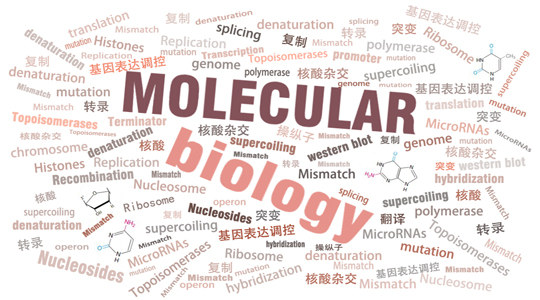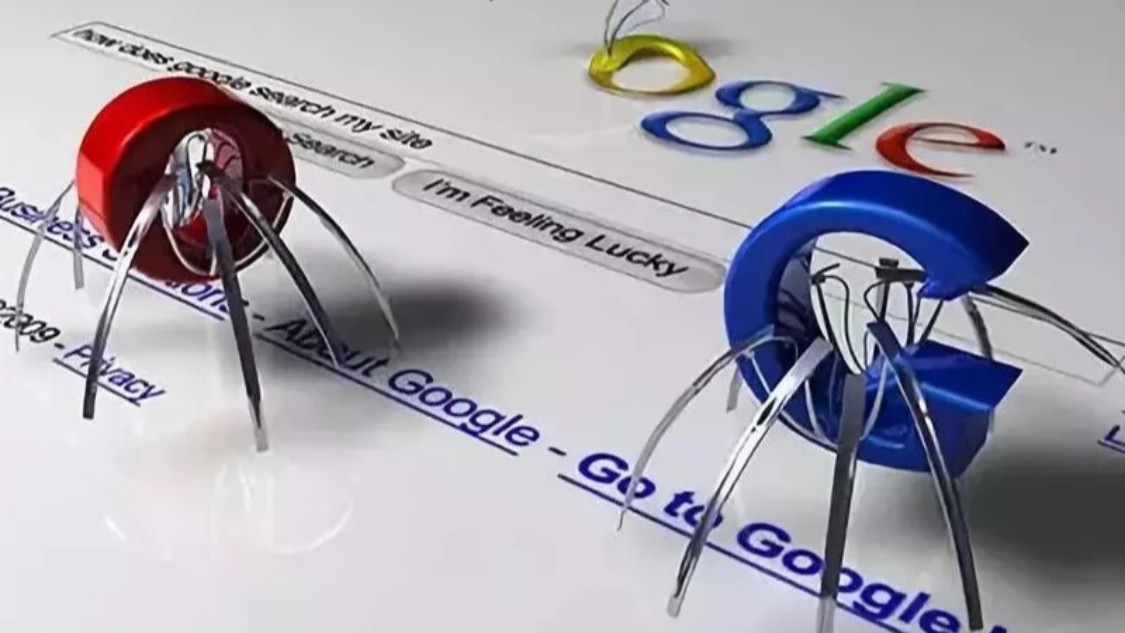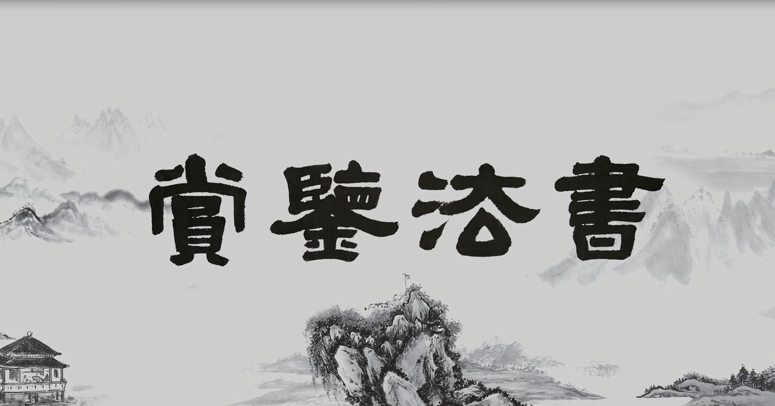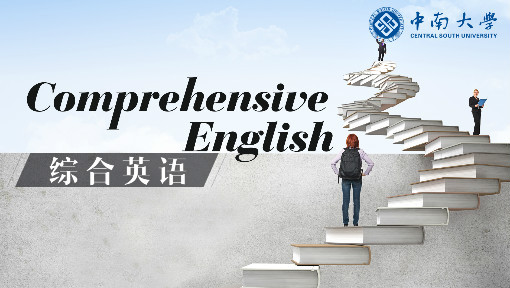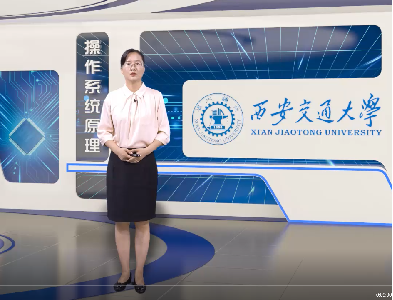
当前课程知识点:Basic Molecular Biology > Chapter 1 The material basis of genetic information > C1-Lecture 4 Supercoiled DNA > Video C1-L4 Supercoiled DNA
返回《Basic Molecular Biology 》慕课在线视频课程列表
返回《Basic Molecular Biology 》慕课在线视频列表
知之为知之
不知为不知
螺旋之螺旋
谓之超螺旋
我们已经了解了
DNA的双螺旋结构
以及其他各种二级结构
这堂课我们来看一下
DNA的三级结构
DNA的三级结构是指
在一 二级结构的基础上
多聚核苷酸链的卷曲
它包括了链的扭结 超螺旋等等
而本节我们来看一下最为常见
以及最为重要的DNA的超螺旋
DNA的超螺旋
英文名称为supercoiling
是指在细胞内特定的离子浓度
pH条件
以及拓扑异构酶的作用下
闭合 环状 双链DNA分子
紧密卷曲而形成的三级结构
细胞内的DNA的超螺旋结构
可以通过电镜观察
以及凝胶电泳的方法来进行检测
左图上方是我们的
松弛型环状DNA电镜的结构
而左图下方就是我们的
超螺旋DNA在电镜下的图片
通过凝胶电泳的方法
我们可以看到环形超螺旋结构
它具有最快的电泳迁移率
而环形松弛型DNA
它的电泳迁移率是最慢的
线性松弛型DNA
它的电泳迁移率居中
用这种方法
我们就可以实现
对DNA超螺旋的分离和检测
按照超螺旋的方向
我们可以把DNA超螺旋分为
正超螺旋和负超螺旋
正超螺旋是指超螺旋的方向
与双螺旋的方向相反
而负超螺旋是指超螺旋的方向
与双螺旋的方向相同
对于B型双螺旋
它本身是一个右手螺旋
当我们在B型双螺旋上
施加右旋的力量使旋转变紧
我们的环状DNA
为了平衡额外的力量会形成
与双螺旋方向相反的超螺旋
这种超螺旋就被称为正超螺旋
同理
当我们给B型双螺旋上
施加左旋的力量使它的旋转变松
我们的环状DNA
同样为了平衡压力
就会形成与我们的B形双螺旋
相同方向的超螺旋
这种超螺旋方向与双螺旋方向
相同的情形
这种方向的超螺旋
我们就称之为负超螺旋
相同相反 相反相同
天哪 我都分不清楚了
那我们就来一起
看一看搓麻绳的视频
你们也可以一起来做一做哦
需要注意的是
几乎所有生物中
天然的DNA都是负超螺旋的哦
DNA的超螺旋
可以用两个公式来表达
第一个公式就是1968年由
Vinagrad提出来的Vinagrad公式
γ=β-α
这里的α指的是初级螺旋圈数
它是由
我们DNA链的长度来决定的
而β指的是
连接数linking number
它是指我们的双链DNA之间
所交叉的个数
而γ就是指我们的超螺旋数了
在描述Vinagrad
研究工作的这篇论文中
我们可以看到Vinagrad首先对
闭合环状DNA的特性进行研究
从电镜结果中他发现
对于DNA分子而言
由DNA链长度
所决定的螺旋圈数
是DNA分子
最稳定化学状态下的螺旋圈数
即我们所说到的初级螺旋圈数
一旦DNA分子被旋紧或旋松
也就是说分子间双链间的
交叉数增加或者减少
整个环状闭合DNA分子
就会产生扭曲的结构
来保证总的螺旋数不变
即总是等于我们的初级螺旋圈数
由此他提出了
我们上面提到的公式
γ=β-α
另一个用来描述超螺旋的
是超螺旋密度Sigma
Sigma用公式表示为σ=γ/α
它的含义就是每一个初级螺旋圈数中所能包含的超螺旋的个数
这里我们要注意
大多数的DNA分子
都有5%的负超螺旋哦
DNA的超螺旋还有一些特性
首先
超螺旋是闭合环状 DNA的特点
一旦环状DNA的
单链或者双链被断开
它的超螺旋就会被释放
其次
拓扑异构酶参与了
DNA超螺旋的调控
而由拓扑异构酶调控的DNA超螺旋
参与到了细胞复制等
各各重要的生命过程
因此具有非常重要的
生物学意义
最后希望大家记住
大多数的DNA通常都是
以负超螺旋的状态存在的
可以看到
DNA的超螺旋程度
是由拓扑异构酶来调控的
拓扑异构酶的概念是指能够调控
DNA拓扑异构体之间转换的酶
也就是说拓扑异构酶能够
改变DNA的螺旋性
细胞内有两类拓扑异构酶
分别是
拓扑异构酶1
和拓扑异构酶 2
拓扑异构酶1的功能是
消除负超螺旋
它会作用于单链DNA分子上
每作用一次消除一个负超螺旋
因此不需要能量的提供
拓扑异构酶2呢
是作用于双链DNA分子的
任何部位
每作用一次它会产生
两个负超螺旋
因此它需要 ATP来 提供能量
拓扑异构酶1的
作用原理如图所示
我们可以看到
拓扑异构酶1利用
其络氨酸残基上的羟基
攻击并切断DNA单链上的
磷酸二酯键
并连接在DNA链的5’端
随后它带领着DNA的5’端
绕过另一条未被切断的单链
利用贮藏水解磷酸二酯键的能量
将断头连接起来
这样我们的一个负超螺旋
就被释放了
在大肠杆菌中
拓扑异构酶2又称为
DNA gyrase即促旋酶
它往往是在解旋酶解开
DNA双链形成DNA链上的
正旋压力后
破坏正超螺旋形成
负超螺旋来平衡扭力的
从这幅图我们可以看到
促旋酶的作用原理
促旋酶有两个α亚基
和两个β亚基
具有一个正超螺旋的DNA链
会首先缠绕在我们的促旋酶上
利用ATP提供的能量
切开我们的DNA双链
而DNA双链两端的5’端会
分别与我们的亚基相结合
在我们亚基的带领下
绕过切口并重新连接
重新连接之后的DNA它释放了
正超螺旋而形成了一个负超螺旋
在我们的促旋酶中
我们的α亚基具有
磷酸二酯酶的活性
而我们的β亚基具有
ATP酶的活性
而这幅图给出了质粒DNA
在促旋酶的作用下形成了
负超螺旋的凝胶电泳结果
可以看到
随着促旋酶的增加
我们的DNA形成了具有较高的
电泳迁移率的负超螺旋结构
真核生物中拓扑异构酶2
不仅可以用来释放正超螺旋
形成负超螺旋
还可以用来解开耦合的
两个环状DNA
这幅图给出了一种
strand passage即断裂双链
绕过另一条DNA双链的机制
可以看到我们的拓扑异构酶2
在Mg离子存在的情况下
切割了DNA双链
并在DNA双链两端
形成了磷酸络氨酸
随后ATP的结合使得
酶上端的开口闭合
而闭合的夹子结构俘获了
另外一条双链DNA T
并促进T通过G的切口
在通过G的切口之后
我们的双链DNA T通过
酶下端的羧基端
离开了我们的拓扑异构酶
从而实现了G绕过T的全过程
在这一过程中
第一次ATP的水解促进了
T通过G的切口
而第二次ATP的水解帮助
酶上端的开口重新打开
用来释放我们的双链DNA G
这节课我们介绍了超螺旋的概念
表达方式以及拓扑异构酶的调控
下堂课让我们一起来看一看
DNA的变性
复性
和核酸杂交技术
- C1-Lecture 1 The past and present journey of molecular biology
--Key points C1-L1 The past and present journey of molecular biology
--Video-C1-L1 The past and present journey of molecular biology
--Lecture 1-Homework
-C1-Lecture 2 The nature of genetic material
--Key points C1-L2 The nature of genetic material
--Video-C1-L2 The nature of genetic material
--C1-Lecture 2-Homework
-C1-Lecture 3 Amazing DNA double helix
--Key points C1-L3 Amazing DNA double helix
--Video C1-L3 Amazing DNA double helix
--C1-Lecture 3-Homework
-C1-Lecture 4 Supercoiled DNA
--Key points C1-L4 Supercoiled DNA
--C1-Lecture 4-Homework
-C1-Lecture 5 Denaturation, renaturation and hybridization
--Key points C1-L5 Denaturation, renaturation and hybridization
--Video C1-L5 Denaturation, renaturation and hybridization
--C1-Lecture 5-Homework
-C1-Lecture 6 Nucleic acids extraction and gel electrophoresis
--Key points C1-L6 Nucleic acid extraction and gel electrophoresis
--Video C1-L6 Nucleic acid extraction and gel electrophoresis
--C1-Lecture 6-Homework
-Chapter 1 Test
-Learning resources
-- References
-C2-Lecture 1 Genome does not equal to chromosome
--Key points C2-L1 Genomes are not equal to chromosomes
--Video C2-L1 Genomes are not equal to chromosomes
--Discussion C2-L1 Genomes are not equal to chromosomes
--C2-Lecture 1-Homework
-C2-Lecture 2 Nucleosomes and their Assembly
--Key points C2-L2 Nucleosomes and their Assembly
--Video C2-L2 Nucleosomes and their Assembly
--Discussion C2-L2 Nucleosomes and their Assembly
--C2-Lecture 2-Homework
-C2-Lecture 3 Higher order chromatin structure
--Key points C2-L3 Higher order chromatin structure
--Video C2-L3 Higher order chromatin structure
--Discussion C2-L3 Higher order chromatin structure
--C2-Lecture 3-Homework
-C2-Lecture 4 Chromatin modification and remodeling
--Key points C2-L4 Chromatin modification and remodeling
--Video C2-L4 Chromatin modification and remodeling
--Discussion C2-L4 Chromatin modification and remodeling
--C2-Lecture 4-Homework
-Chapter 2 Tests
-Learning resources
-C3-Lecture 1 Semiconservative DNA replication
--Key points C3-L1 Semiconservative DNA replication
--Video C3-L1 Semiconservative DNA replication
--Discussion C3-L1 Semiconservative DNA replication
--C3-Lecture1 Homework
-C3-Lecture 2 The mechanism of DNA polymerase
--Key points C3-L2 The mechanism of DNA polymerase
--Video C3-L2 The mechanism of DNA polymerase
--Discussion C3-L2 The mechanism of DNA polymerase
--C3-Lecture 2-Homework
-C3-Lecture 3 Process of DNA replication
--Key points C3-L3 Process of DNA replication
--Video C3-L3 Process of DNA replication
--Discussion C3-L3 Process of DNA replication
--C3-Lecture 3-Homework
-C3-Lecture 4 Regulation of DNA replication initiation
--Key points C3-L4 Regulation of DNA replication initiation
--Video C3-L4 Regulation of DNA replication initiation
--Discussion C3-L4 Regulation of DNA replication initiation
--C3-Lecture 4-Homework
-C3-Lecture 5 The end replication problem and telomere
--Key points C3-L5 The end replication problem and telomere
--Video C3-L5 The end replication problem and telomere
--Discussion C3-L5 The end replication problem and telomere
--C3-Lecture 5-Homework
-C3-Lecture 6 Let’s “cook” DNA
--Video C3-L6 Let’s “cook” DNA
--Discussion C3-L6 Let’s “cook” DNA
--C3-Lecture 6-Homework
- Chapter 3 Tests
-Learning resources
-C4-Lecture 1 Replication errors and the mismatch repair system
--Key points 4-1 Replication errors and the mismatch repair system
--Video 4-1 Replication errors and the mismatch repair system
--Discussion 4-1 Replication errors and the mismatch repair system
--C4-Lecture 1-Homework
-C4-Lecture 2 DNA damage
--C4-Lecture 2-Homework
-C4-Lecture 3 DNA Repair
--C4-Lecture 3-Homework
-C4-Lecture 4 DNA Homologous Recombination
--Key points 4-4 DNA Homologous Recombination
--Video 4-4 DNA Homologous Recombination
--Discussion 4-4 DNA Homologous Recombination
--C4-Lecture 4-Homework
-C4-Lecture 5 Changing the natural gene sequences
--Key points 4-5 Changing the natural gene sequences
--Video 4-5 Changing the natural gene sequences
--Discussion 4-5 Changing the natural gene sequences
-Chapter 4 test
- Learning resources
-C5-Lecture 1 RNA polymerase
--Key points 5-1 RNA polymerase
--Discussion 5-1 RNA polymerase
--C5-Lecture 1-Homework
-C5-Lecture 2 Transcription process in prokaryotes
--Key points 5-2 Transcription process in prokaryotes
--Video 5-2 Transcription process in prokaryotes
--Discussion 5-2 Transcription process in prokaryotes
--C5-Lecture 2-Homework
-C5-Lecture 3 Transcriptional regulation in bacterial I: Lac operon
--Key points 5-3 Transcriptional regulation in bacterial I: Lac operon
--Video 5-3 Transcriptional regulation in bacterial I: Lac operon
--Discussion 5-3 Transcriptional regulation in bacterial I: Lac operon
--C5-Lecture 3-Homework
-C5-Lecture 4 Transcriptional regulation in bacterial II: Tryptophan operon
--Key points 5-4 Transcriptional regulation in bacterial II: Tryptophan operon
--Video 5-4 Transcriptional regulation in bacterial II: Tryptophan operon
--Discussion 5-4 Transcriptional regulation in bacterial II: Tryptophan operon
--C5-Lecture 4-Homework
-Chapter 5 Test
-Learning resources
-Lecture 1 Eukaryotic RNA polymerase and promoter
--Key points 6-1 Eukaryotic RNA polymerase and promoter
--Video 6-1 Eukaryotic RNA polymerase and promoter
--Discussion 6-1 Eukaryotic RNA polymerase and promoter
--C6-Lecture 1-Homework
-Lecture 2 Transcription process in eukaryotic cell
--Key points 6-2 Transcription process in eukaryotic cell
--Video 6-2 Transcription process in eukaryotic cell
--Discussion 6-2 Transcription process in eukaryotic cell
--C6-Lecture 2-Homework
-Lecture 3 Transcription factors of eukaryotic cell
--Key points 6-3 Transcription factors of eukaryotic cell
--Video 6-3 Transcription factors of eukaryotic cell
--Discussion 6-3 Transcription factors of eukaryotic cell
--C6-Lecture 3-Homework
-Lecture 4 Epigenetic Regulation of gene expression
--Key points 6-4 Epigenetic Regulation of gene expression
--Video 6-4 Epigenetic Regulation of gene expression
--Discussion 6-4 Epigenetic Regulation of gene expression
--C6-Lecture 4-Homework
-Chapter 6 Test
-Learning resources
-Lecture 1 RNA splicing
--C7-Lecutre 1-Homework
-Lecture 2 Cotranscriptional processing of nuclear pre-mRNA
--Key points 7-2 Cotranscriptional processing of nuclear pre-mRNA
--Video 7-2 Cotranscriptional processing of nuclear pre-mRNA
--Discussion 7-2 Cotranscriptional processing of nuclear pre-mRNA
--C7-Lecture 2-Homework
-Lecture 3 One gene one protein? Alternative RNA splicing
--Key points 7-3 One gene one protein? Alternative RNA splicing
--Video 7-3 One gene one protein? Alternative RNA splicing
--Discussion 7-3 One gene one protein? Alternative RNA splicing
--C7-Lecture 3-Homework
-Lecture 4 “Seeing” RNA
-C7-Lecture 4-Homework
-Chapter 7 Test
-Learning Resources
-Lecture 1 Genetic codons and ribosome
--Key points 8-1 Genetic codons and ribosome
--Video 8-1 Genetic codons and ribosome
--Discussion 8-1 Genetic codons and ribosome
--C8-Lecture 1-Homework
-Lecture 2 Process of translation
--Key points 8-2 Process of translation
--Video 8-2 Process of translation
--Discussion 8-2 Process of translation
--C8-Lecture 2-Homework
-Lecture 3 Regulation of gene expression at Translational level
--Key points 8-3 Regulation of gene expression at Translational level
--Video 8-3 Regulation of gene expression at Translational level
--Discussion 8-3 Regulation of gene expression at Translational level
--C8-Lecture 3-Homework
-Lecture 4 Looking for your protein
--Key points 8-4 Looking for your protein
--Video 8-4 Looking for your protein
-Chapter 8 Test
-Learning resources
--SDS-PAGE
-Final Exam
